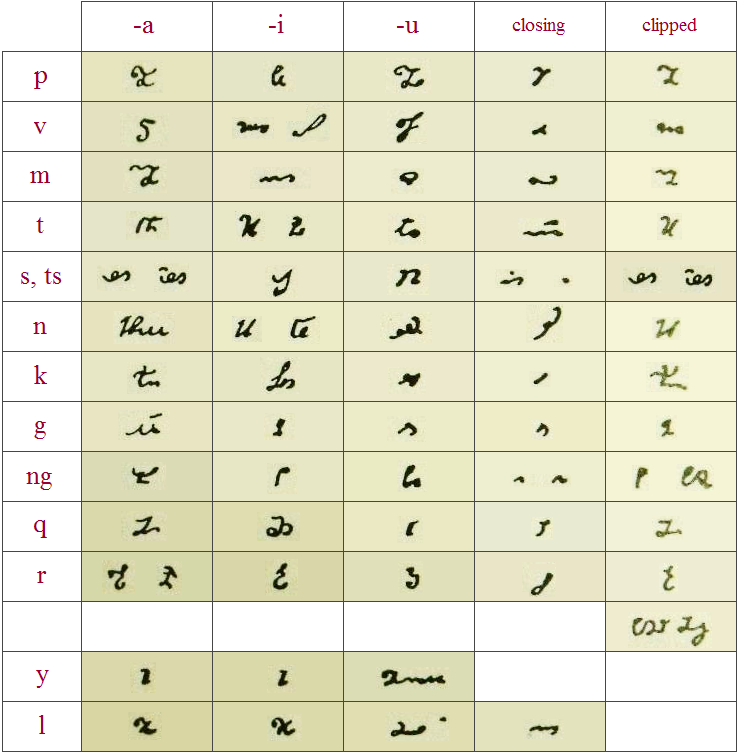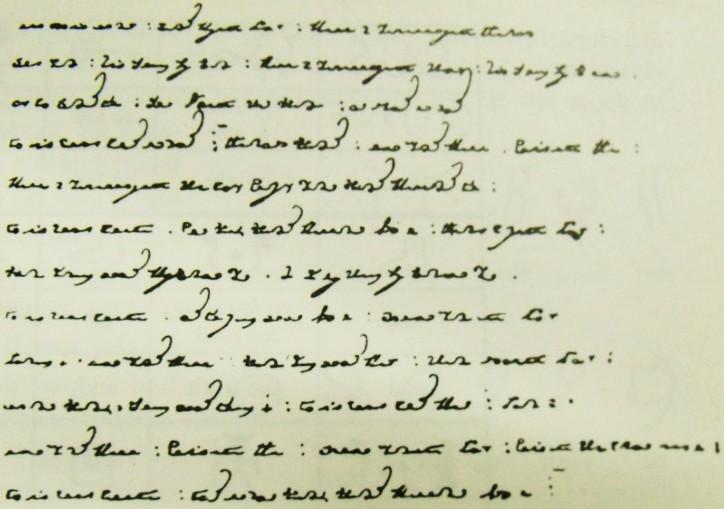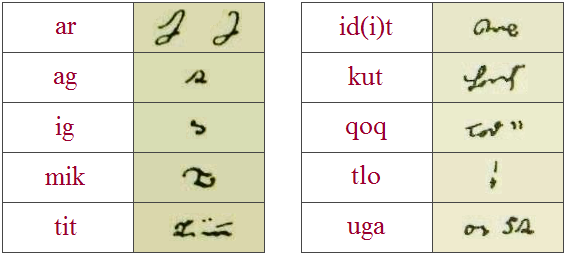This script was created by an Alaskan eskimo named Uyaquq, in around 1900. He was inspired to fashion a writing system for his language Yugtun (a version of Central Alaskan Yupik, of the Eskimo-Aleut family) after coming across the texts of missionaries. At first he created a pictographic system, but later developed it into a syllabary. It is unusual both in its cursiveness and its lack of reknown.
Syllabary
The charts here are adapted from Die Alaska-Schrift und Ihre Schriftgeschichtliche Bedeutung by Alfred Schmitt, 1951. There is some want of clarity in the images, and the transliteration itself does not correspond well with current phonological information.


Special Combinations
Some combinations of letters or important affixes are written as ligatures, or given a special form.
Example
This is a small sample of Uyaquq’s prolific writing. Without some knowledge of the target language, and of the variations in the script itself, it is rather difficult to transliterate. Note the several kinds of punctuation mark.

